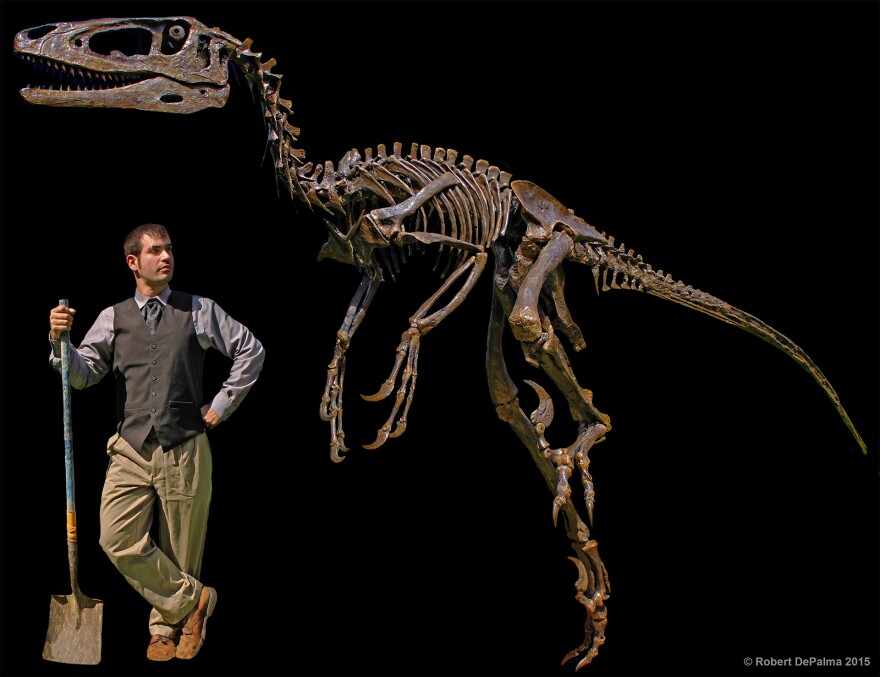While the Tyrannosaurus rex was at the top of the food chain 66 million years ago, a team of researchers linked to the University of Kansas discovered a giant, fearsome raptor that may have given T. rex a run for its money.
Dakotaraptor, as it’s called, was 17-feet long, six-feet tall at the hips and weighed hundreds of pounds. With a 9.5-inch razor-sharp retractable claw likely used to gut or latch onto prey, it was an unbeatable hunter.
“For all intents and purposes this was the Ferrari of the predators of its day,” says Robert DePalma, who discovered the Dakotaraptor fossils as a graduate student at KU in 2005 while on an excavation in South Dakota. “It could turn on a dime, run very fast. It could easily jump twice or three times its body height. It could kill any herbivorous dinosaur that it encountered. It was a lethal animal.”
Find the research paper documenting Dakotaraptor here
For the last decade, DePalma and a team of researchers have been piecing together the roughly dozen fossils he excavated. What emerged was the picture of a frightening predator that stalked the present-day Dakotas millions of years ago.

Here’s what you should know:
Hail the killing machine
That 9.5-inch claw was for slicing and dicing whatever hapless little planting-eating dinosaur was having its last, worst day.
The raptor’s body was perfect for hunting. DePalma likened it to an Olympic sprinter’s – strong and powerful, yet lithe and agile.
Evidence of a relatively large brain means it’s likely that Dakotaraptor was smart. They may even have hunted in packs. Gulp.
A missing link
The discovery of Dakotaraptor is particularly important because it answers a question paleontologists have been asking for decades: What could compete with the T. rex?
For a long time, scientists have known what was at the top of the food pyramid – the T. rex. There’s lots of evidence of smaller dinosaurs toward the bottom. But what was in the middle? Now, they think it was Dakotaraptor.
“These things weren’t common, but they were not rare either,” says David Burnham, a paleontologist at KU. “They were actually a vital component of the Hell Creek fauna at that time.”
Full-grown Dakotaraptors likely competed against sub-adult T. rex, Burnham says.

Don’t forget the feathers
Tiny dots on the lower arm bones DePalma found indicate that Dakotaraptors had feathers.
They were likely too big to fly, so the researchers aren’t sure yet what evolutionary advantage the feathers bestowed. It’s possible Dakotaraptors used their wings to capture prey or to protect and warm eggs.
Think Jurassic Park
Hate to burst your bubble, but Velociraptors, made famous by the Jurassic Park film franchise, were actually the size of a common turkey.
Dakotaraptors, on the other hand, were more in line with the size of the raptors featured in the films. (Even though the evidence for Dakotaraptor hadn’t been studied until after the films came out.)
“Monsters are real,” Burnham says. “This is a monster. We can lay the bones out, talk about it, but only your imagination can make it come to life.”
Jeremy Bernfeld is the editor of Harvest Public Media, based at KCUR 89.3. Find him on Twitter @JeremyHPM.

